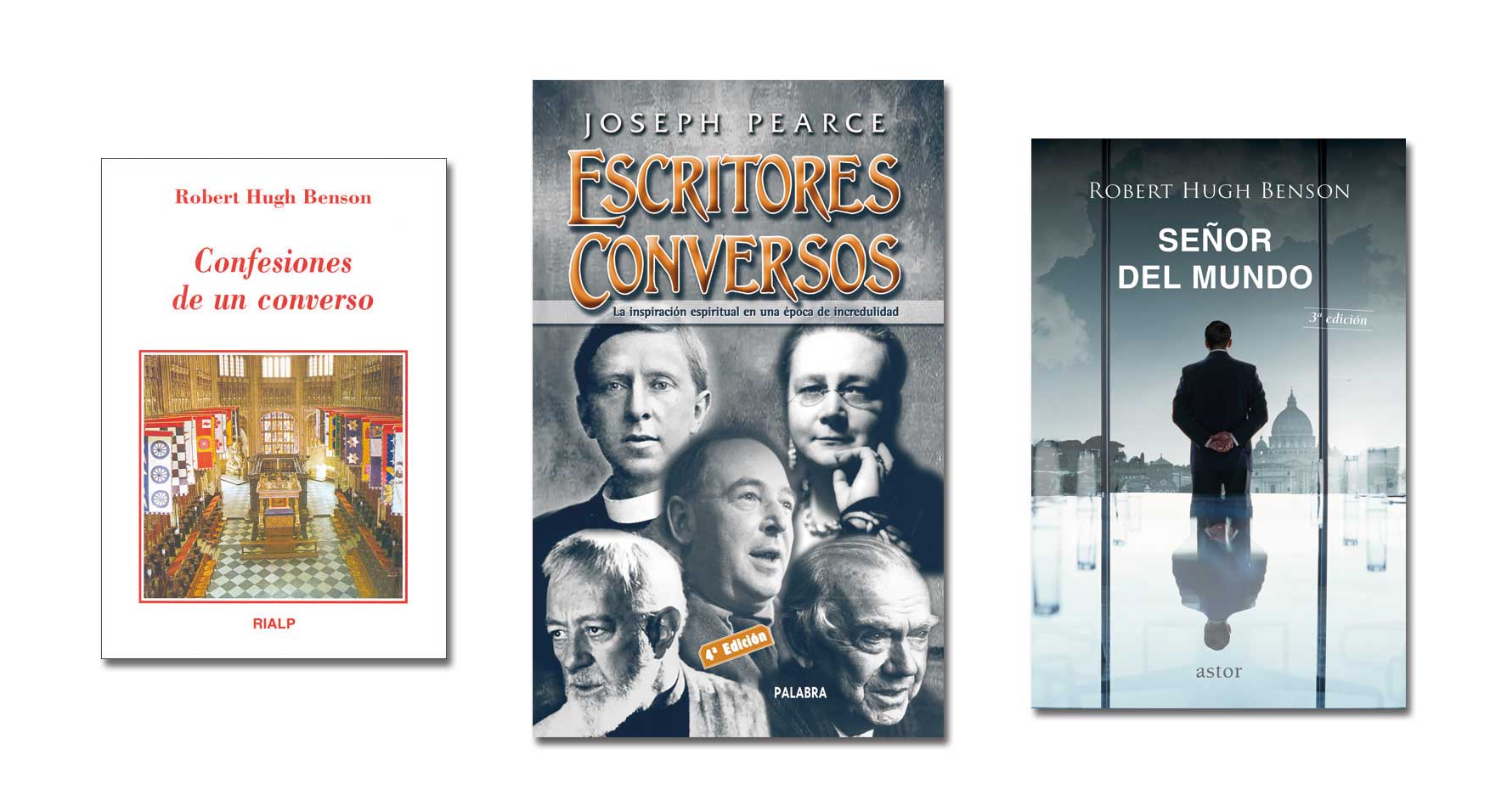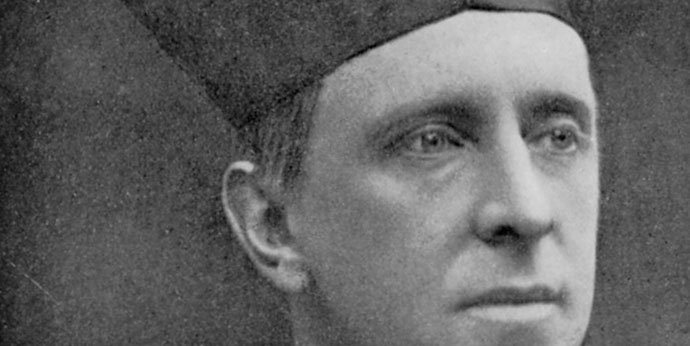Robert H. Benson, the youngest son of Archbishop of Canterbury Edward W. Benson (1829-1896), had been educated at Eton and Trinity College, Cambridge. He was ordained an Anglican priest in 1895 and, after a long process of reflection and prayer - of which he gives news in Memoirs of a convert-He was received into the Catholic Church in 1903 and ordained a priest the following year. Benson had excellent literary gifts. In addition to Lord of the world (1907), published in his short life - he died at the age of 43 - fourteen other successful novels, four plays and many other religious or apologetic books.
From the early daysSeveral authors have detected the presence of the thought and texts of Romano Guardini (1885-1968) in the preaching of Pope Francis and, in particular, in his recent encyclical Laudato si' May 2015. It is known that already in the novitiate the young Bergoglio was a reader of The Lord of Guardini and that in 1986 he spent a year in Germany working on a doctoral project on the dynamics of disagreement and encounter in Guardini.
In a certain sense, something of that project now surfaces in this luminous encyclical when the Pope reminds us that there is a tendency to believe that "that every increase of power constitutes without more a progress, an increase of security, of utility, of well-being, of vital energy, of fullness of values", although "modern man is not prepared to use power wisely." (n. 105). The words of The decline of the modern age are cited on at least eight occasions (notes 83, 84, 85, 87, 88, 92, 144 and 154): "Each epoch tends to develop little self-awareness of its own limits. This is why it is possible that humanity today does not realize the seriousness of the challenges it faces, and 'the possibility of man's misuse of power is constantly growing' when he is not 'subject to any norm regulating freedom, but only to the supposed imperatives of utility and security'" (n. 105). And a little further on he adds: "Technique has an inclination to seek to ensure that nothing remains outside its iron logic, and 'the man who possesses technique knows that, at bottom, this is aimed neither at utility nor at well-being, but at mastery; mastery, in the most extreme sense of the word'." (n. 108). It is worth a careful reading of The decline of the modern age (1950) because it sheds much light on how to interpret the encyclical and the present time.
However, it seems to me that there is a second key to the encyclical which refers to a very different source and which has been overlooked. I am referring to the futurist novel by Robert Hugh Benson (1871-1914) Lord of the world [The Lord of the Worldoriginally published in 1907 and mentioned at least twice by Pope Francis in his preaching in recent years. The figure of Julian Felsenburgh, who in the novel becomes the effective master of the world, seems to resonate in the background of the denunciation of the abuse of technocratic power that formulates the Laudato si': "It becomes indispensable to create a normative system that includes insurmountable limits and ensures the protection of ecosystems, before the new forms of power derived from the techno-economic paradigm end up sweeping away not only politics but also freedom and justice." (n. 53).
Lord of the world gives much food for thought, as so often happens with good works of science fiction. No doubt about it, "deserves a place" -wrote Joseph Pearce. "next to Brave New World (Huxley) and 1984 (Orwell) among the classics of dystopian fiction." It is the story of how, around the year 2000, the worst nightmare -a dystopia is an anti-utopia - has taken over the world and is preparing for the final elimination of religion.
To learn more:

Confessions of a convertR. H. Benson. Ed. Rialp, 1998. Personal testimony in which Benson describes the arduous path that led him to the Catholic Church.
Converted writersJoseph Pearce. Ed. Palabra, 2006. Anglo-Saxon intellectuals and artists who manifest the creative force of Christianity.
Lord of the world, R. H. Benson. Ed. Palabra, 2015. A book that gives much food for thought, as so often happens with good works of science fiction.
As explained by Jesuit Cyril Martindale, Benson's biographer, the American Felsenburgh, the main character in Lord of the world who represents the Antichrist, is not so much an incarnation of Satan, but rather the quintessence of human perfection, the peacemaking politician on a world scale who embodies Man par excellence, the Spirit of the World. In contrast, the priest Percy Franklin who represents Christianity is a modest person who, when he is elected Pope after the fall of Rome at the hands of Felsenburgh, lives in poverty and anonymity in Nazareth awaiting the terrible end. For today's reader this behavior cannot but evoke the personal style of Pope Francis.
Two quotations suffice to demonstrate the timeliness of this book. One, the argumentation of Oliver Brand, an official of the new order, to his wife Mabel, who still retains traces of religiosity: "Deep in your heart you know that euthanasia administrators are the real priests.". And this one: "'Underneath every Catholic is a murderer,' said one of the articles featured in Pueblo Nuevo". When euthanasia is administered as if it were the Anointing of the Sick or when advocates of atheism such as Sam Harris argue that a religious person is a potential terrorist, it becomes quite clear that this work written more than a hundred years ago is very much up to date.
Benson himself warned of the sensationalist nature of his novel in an introductory note. With exquisite British phlegm he points out: "I am fully aware that this is a tremendously sensationalist book, open therefore to innumerable criticisms for that reason, as well as for many others. Yet I have had no other way of expressing the principles I wished to convey (and in whose truth I passionately believe) except by carrying the argument to a sensational extreme. I have, however, endeavored not to flare up in an improper manner.". It seems to me that the Pope in the Laudato si' does the same when it warns that "the earth, our home, seems to become more and more an immense deposit of filth." (n. 21) and that we are immersing ourselves in "a spiral of self-destruction" (n. 163). Truly, it seems to me, there is a deep harmony between Pope Francis and the Lord of the world by Robert Benson.
It is a good thing that Ediciones Palabra has published a new edition of the 1988 translation by Rafael Gómez López-Egea with a beautiful illustration on the cover. The master of the world was translated into Spanish very soon by the priest Juan Mateos de Diego and published in first published in Spain in 1909 by the Gustavo Gili publishing house in Barcelona, and would see up to six successive editions in this publishing house throughout the last century. We do not know if the young Bergoglio would read this translation or the one made by the polemic Leonardo Castellani in Argentina (Itinerarium, 1958). In recent years other translations into Spanish have seen the light of day: that of Miguel Martínez-Lage (Homo Legens, 2006), and those of San Román (2011) and Stella Maris (2015). Castellani's has also been republished with a preface by Ralph McInerny and an introduction by C. John McCloskey, III (Cristiandad, 2013).








